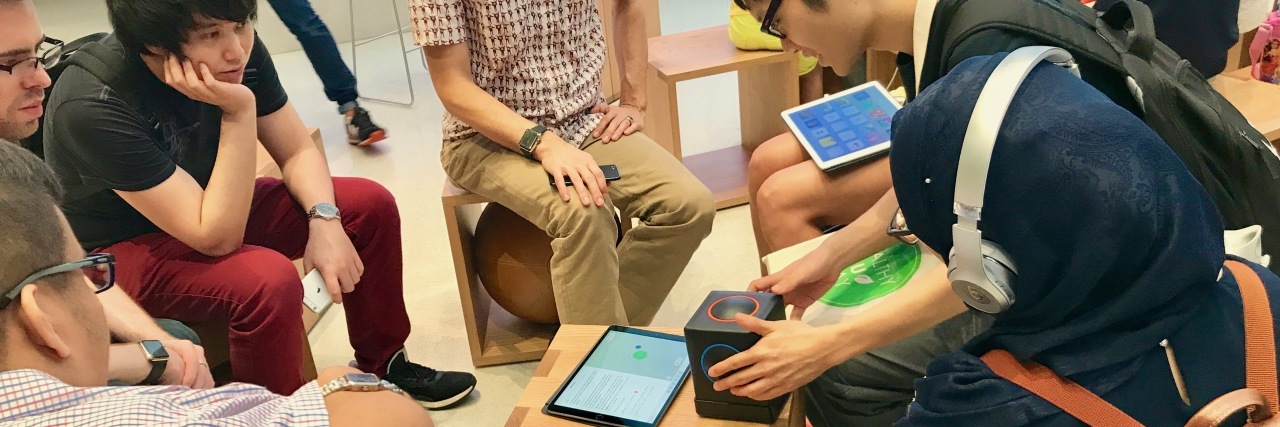It is funny how things that don’t necessarily seem at first glance to share a common bond can actually be completely meant for each other. Take learning to code and the world of autism education. The connections might not be apparent at first — however, I have seen coding open new doors for students with autism in spectacular ways. Coding is such a powerful tool for interpreting the world in a way that is highly relatable to a great many of the students with autism I work with. With the language of code in their heads and an iPad at their fingertips, we are experiencing a whole new way of working with students with autism that is not only exciting but genuinely profound.
Learning to code is all about learning how to solve problems, work with others in creative ways, and think in a new language. Teaching children with autism employs the exact same skills — creating logical connections, breaking tasks into smaller parts and sequencing them — but it is also much more than this. When we work with children with autism, something I’ve been doing for more than a decade now, one of our key jobs is to teach thinking skills. I’ll give you an example — children with autism can find it difficult to organize their thoughts. Now take a morning routine, such as getting ready for school. This requires a lot of mental organization to manage tasks such as having a shower, getting dressed, eating breakfast, and packing your school bag. For a child who has difficulty thinking in this way, this sort of challenge can be nearly insurmountable.
Teaching our children with autism to code is teaching them the thinking skills they need to address challenges such as this. In autism education we often use visual schedules to help prompt children through things like a morning routine — but what if we taught children the foundations of how to think about and address these routines? Take an app like Swift Playgrounds which helps teach coding to children. The app uses visual characters on the iPad and simple step-by-step instructions to teach children how to use the language of coding to solve problems. Our children love this app, and I argue that a big reason they enjoy it so much is because it teaches them critical things about the way they think.
One of the things children with autism I have taught have found difficult at times is knowing what sort of clothes to wear outside depending on the weather. It is enough of a task to just get dressed sometimes, let alone give thought to what would suit the weather outside. Coding already has a language that helps us address this need — in Swift, it is called “Else / If” statements. It works like this: “If it is sunny, I’ll wear shorts. Else, I’ll wear long pants.” One of my former students is already working on creating an app to help her solve the problem of what to wear each morning — but the truth is, she has already solved the problem by learning how to think about it. When she learned how coding could help frame her thoughts, to help her organize the way she structured her morning routines, to help her take a big challenge and break it down into its smaller parts, this is when coding elevated itself from being the language of technology and became the language of problem solving and critical thinking.
I am fascinated with how code has already become a natural part of the language our children use when they talk about how they think. I have a nephew who says, “I just want to backspace that thought and try again,” or a friend of my daughter who says, “My thoughts are buffering, hold on I can nearly picture what I want to say,” or “My brain is having a glitch, let me think about that for a second.” This is why explicitly teaching coding as thinking skills is so important — it is already part of the metaphors and descriptions our children use to relate how their minds work, in the same way previous generations say, “Time to turn the page on that chapter of my life,” or “Can we rewind to the beginning?”
I want my students to be able to think for themselves in the most independent and creative ways possible. I want them to see a problem and have the tools to think about it in ways that give them the solutions they need. This is why I’m passionate about coding for life, and why I see autism education and coding as being such natural partners in sharing this language going forward.
Photo by Craig Smith.

